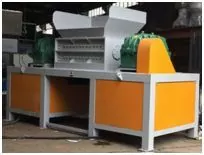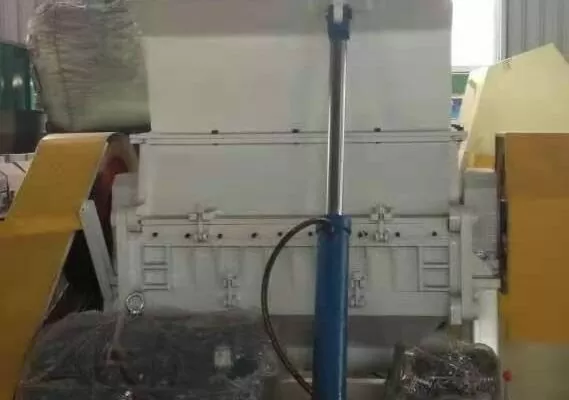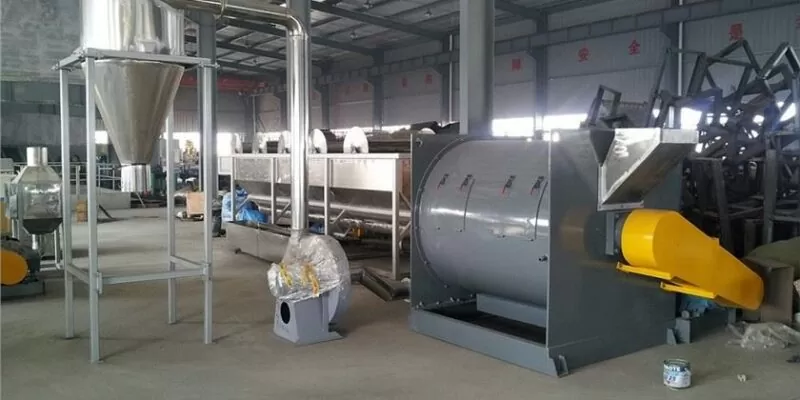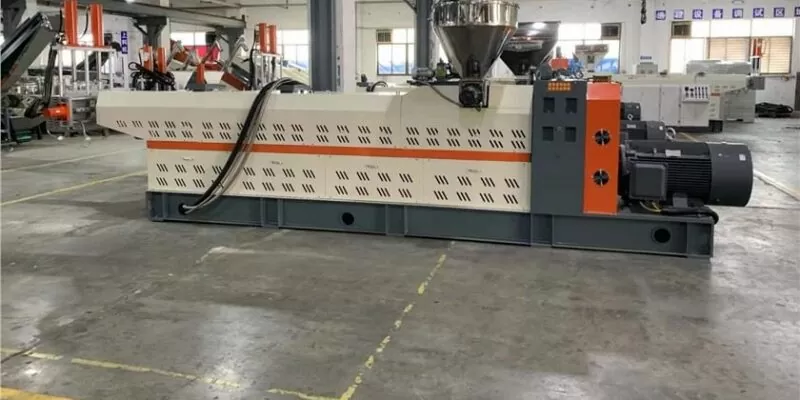I’ve always been fascinated by the challenges of waste management. Every day, I see industries struggling with bulky waste. A 55 gallon drum is one such burden. It accumulates and pollutes if not handled properly. I felt frustrated watching our environment suffer. Then I discovered an opportunity. Recycling these drums can save resources and reduce landfill overflow. I knew something had to change. I took action at Amige. I decided to lead by example in drum recycling. This passion drives me every day.
Recycling 55 gallon drums is not just possible—it’s essential. I discovered a process that transforms discarded drums into valuable raw materials. By recycling these large containers, we conserve resources and cut down on environmental hazards. I have seen the positive impacts firsthand. My team and I work closely with certified recycling facilities. Our focus is on turning potential waste into a resource. This method is efficient and safe.
I’m excited to share my journey with you. I promise you some surprises along the way.
Recycling 55 gallon drums is a subject close to my heart. I remember the early days when I questioned every waste disposal process. I was determined to find sustainable alternatives. My research led me to innovative recycling methods. I met experts and collaborated with industry leaders. Each conversation fueled my resolve. I realized that drum recycling was not just an environmental need—it was a business opportunity. I could turn a waste problem into a profitable venture. And so, Amige began its journey in this arena.
I discovered that recycling processes are more efficient than many think. They cut down waste, reduce costs, and even create new revenue streams. This dual benefit of environmental care and economic gain keeps me motivated every day.

What are the Environmental Benefits of Recycling 55 Gallon Drums?
When I first delved into recycling large containers, I was surprised by the environmental benefits. I learned that every recycled drum reduces the need for new raw materials. This, in turn, lowers greenhouse gas emissions. According to some studies (data support), using recycled materials saves a significant amount of energy. The process is not energy-intensive. It is designed to recover valuable metals and plastics that would otherwise end up in landfills.
I take pride in the fact that my company helps reduce our environmental footprint. I always emphasize that recycling is a win-win. Our planet benefits and businesses gain a sustainable edge. I share this belief passionately with my team. Every recycled drum means fewer pollutants. It means less waste contaminating our soil and water. I often quote experts who say, “Waste not, want not.” It is an ethos that guides my decisions at Amige.
I also discovered that recycling these drums can reduce the carbon footprint associated with producing new materials. The extraction and processing of virgin materials require substantial energy and water. Recycling can reduce these demands significantly (data support). I constantly look for ways to improve sustainability practices. By optimizing the recycling process, we can lower energy consumption and minimize waste.
I believe that every small action counts. By focusing on recycling, we contribute to a larger global effort. Our commitment is not just to profit but to preserving the earth. I stand by the conviction that our recycling practices pave the way for a healthier future.
The impact is clear. Recycling 55 gallon drums protects our natural resources. It cuts down on landfill usage and saves energy. I’m proud to be part of this change.
How Does the Recycling Process Work for 55 Gallon Drums?
Let me take you through the process I’ve embraced at Amige. It all starts with collection. Used drums are gathered from various industries. These drums often contain residual materials. So, a meticulous cleaning process is essential. I ensure that we follow strict safety guidelines. Every drum is decontaminated.
Once cleaned, the drums are inspected for damage. I insist on quality checks. Damaged drums are either repaired or recycled differently. Then comes the transformation phase. The drums are cut, shredded, or melted down. Each method is chosen based on the material composition. Metals and plastics follow separate processing streams. I find that this separation maximizes resource recovery. Each step is carefully monitored. We use state-of-the-art equipment to ensure precision and efficiency.
I’m always amazed by the engineering behind these processes. They are both robust and innovative. They ensure that every material is reused. I pride myself on the fact that our process meets international standards. It is environmentally sound and economically viable. I sometimes marvel at how technology has revolutionized recycling. It makes the impossible possible, turning waste into a resource. This is the future of sustainable manufacturing.
Our process is not only eco-friendly but also cost-effective. I believe that the savings can be reinvested in further green technologies. I often compare this recycling process to a well-oiled machine—a perfect blend of art and science.
The process is systematic. Every step is designed with precision. It’s a model that works for us. I am excited by its potential.

Are There Specific Regulations for Recycling These Drums?
I always remind myself that regulation is key. Recycling 55 gallon drums isn’t just about technology—it’s about compliance too. I must adhere to strict state and federal guidelines. I keep abreast of these changes. I’ve made it a point to invest in regulatory training for my team.
There are guidelines on handling hazardous materials. I sometimes find these regulations a bit complex. However, they are in place for our safety. They prevent environmental contamination. I believe that being compliant is a duty we owe to our community. At Amige, we regularly consult with legal experts. They help me navigate these waters. I appreciate that the rules make our operations more credible.
I sometimes attend industry seminars. These gatherings are gold mines for knowledge. I learn about the latest updates in recycling protocols. It’s impressive how technology and regulation can work hand in hand. I strive to ensure that we exceed even the strictest standards. It’s not enough to be compliant. I want to be a leader in ethical recycling practices. This is my commitment as a CEO.
The regulatory framework can be daunting. But with the right approach, it becomes a roadmap to success. I invest in training and compliance audits. These measures pay off by avoiding costly penalties. My goal is to set a benchmark in the recycling industry.
Understanding these regulations has been key. It ensures our work is sustainable and safe. I stand firm on following the rules.
What Challenges Do We Face in Drum Recycling?
Every venture has its hurdles. Drum recycling is no exception. I encountered several challenges in my journey. First, there’s the issue of contamination. Drums often carry hazardous chemicals. This makes cleaning a delicate process. I invest heavily in safety measures. I sometimes wonder why proper disposal wasn’t emphasized earlier.
Logistics also pose a challenge. Collecting and transporting these bulky containers is no small feat. I have learned that collaboration with local authorities is crucial. Timely pickups and efficient routing are essential. I’ve implemented smart scheduling to minimize downtime. Every minute saved translates to better resource utilization. I also face market fluctuations. The recycled material market can be unpredictable. This volatility sometimes makes financial planning difficult.
Then, there’s public perception. Many still see these drums as worthless waste. I counter this with education and outreach. I often speak at conferences. I share success stories to inspire change. I believe that once people see the value, attitudes will shift. This challenge, while significant, is also an opportunity. It pushes me to innovate and improve.
I sometimes face technical difficulties in processing. Upgrading machinery can be costly. However, I view these as investments in the future. I’m committed to overcoming each challenge with determination and wit.
Challenges are inevitable. Yet, I see them as stepping stones. Each problem is a chance to refine our methods.

How Can Businesses Like Amige Contribute to Drum Recycling?
At Amige, I believe that business can be a catalyst for change. I have always been a proponent of sustainability. My team and I have developed practices that integrate recycling into our daily operations. We collaborate with suppliers and partners. We advocate for better waste management policies (data support). I take pride in setting a standard in the industry.
We invest in innovative technologies. These tools help us process drums faster and more efficiently. I’m constantly looking for new methods to improve our recycling operations. Our commitment is not just for profit. It is also a moral responsibility. I’ve seen firsthand the benefits of a circular economy. Every recycled drum is a step toward a greener future. I make it a point to share our successes. I also engage with other business leaders. I encourage them to adopt sustainable practices. I know that collaboration is the key to industry-wide change.
I’m an advocate for transparency. I publish our recycling metrics. I believe that data builds trust. Our reports show a positive trend in recycling rates. I often highlight our milestones. This openness has earned us accolades. It is my mission to inspire others. I firmly believe that every business has the power to make a difference. By setting an example, we pave the way for broader environmental reforms.
I sometimes host webinars. These sessions provide insights into our processes. I answer questions and offer advice. It’s a great way to build a community of like-minded professionals. I want to empower others to join the green revolution.
Businesses play a vital role. At Amige, we lead by example. Our success is proof that sustainability and profitability can go hand in hand.

What is the Future of Drum Recycling?
I often dream about the future of recycling. Drum recycling is evolving. New technologies are on the horizon. I see a future where recycling becomes fully automated. Artificial intelligence and robotics could soon revolutionize the industry (data support). I envision fewer manual processes. This will lead to faster, safer recycling operations. I am excited about these prospects. They promise efficiency and innovation.
I also believe that consumer awareness will drive change. People are increasingly interested in sustainability. They want products that come from responsible practices. I am committed to educating the public. I use every platform available to spread the word. The future is collaborative. I expect more partnerships between industries and government agencies. These alliances will create a robust recycling infrastructure.
The economic incentives are strong. Recycling reduces costs and opens new revenue streams. I see policies evolving to support these initiatives. My team is constantly researching emerging trends. We attend international forums and trade shows. I actively participate in these discussions. They help shape our strategy. I remain optimistic about overcoming the current challenges. Our goal is to build a resilient, sustainable future.
I sometimes marvel at how far we have come. From modest beginnings to leading an industry revolution, our journey has been remarkable. I am excited to see what the future holds. Every recycled drum brings us closer to a sustainable tomorrow.
The future is bright. Drum recycling will redefine sustainability. I am proud to be at the forefront of this change.
Conclusion
Recycling 55 gallon drums is a game changer. I believe our efforts can transform waste into wealth. I am committed to a greener future. Join me at Amige in making a difference.
